Yellow Gum - native (Eucalyptus leucoxylon subsp pruinosa)
Other names: White Ironbark.
The local Yellow Gum grows to be a tall, erect tree. It is widespread and common in goldfields forests. It may grow in pure stands on stony ground. Grey Box and Yellow Gum are often found growing together on forest flats. It is uncommon in hilly forests.
It can be recognised by
- the smooth bark on the upper trunk and branches
- the paired, opposite and stalkless juvenile leaves
- the large, stalked fruit and buds.
Yellow Gum is closely related to Red Ironbark. It can flower profusely and is an important food source for many native birds, mammals and invertebrates.
A lower-growing subspecies from South Australia is often planted in streets and gardens.
Name: leucoxylon: white wood; pruinosa: with a waxy powdery coating.
Folklore has it that the alternative name (White Ironbark) was given by timber-getters; Yellow Gum timber was not acceptable for railway sleepers, but if renamed White Ironbark it was acceptable.
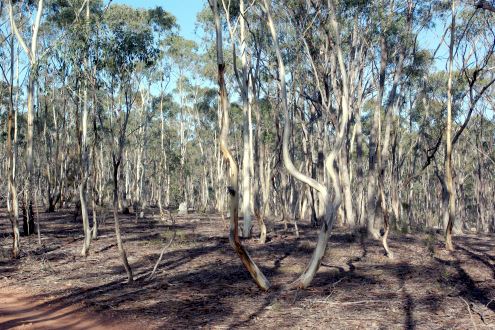
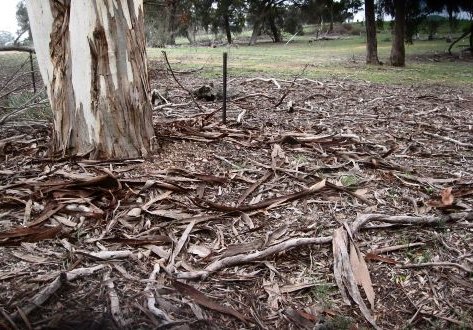
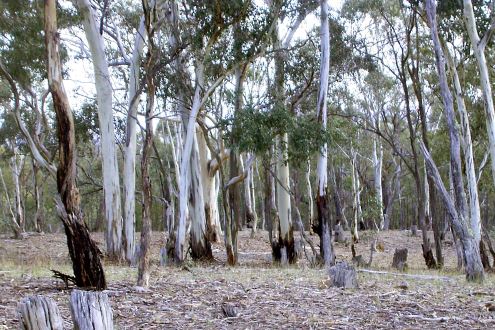
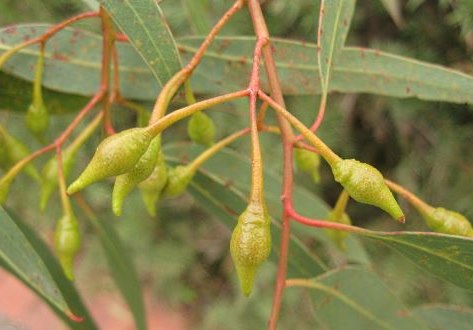
3: Another patch of Yellow Gum with sparse understorey. 4: The large buds are in threes. Garden specimen. Castlemaine.
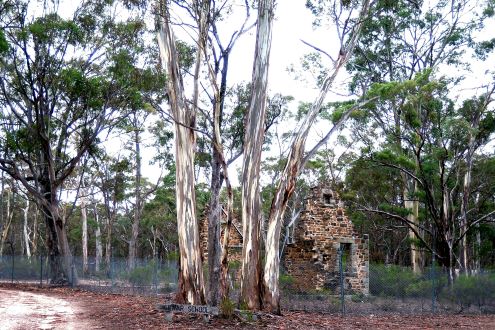
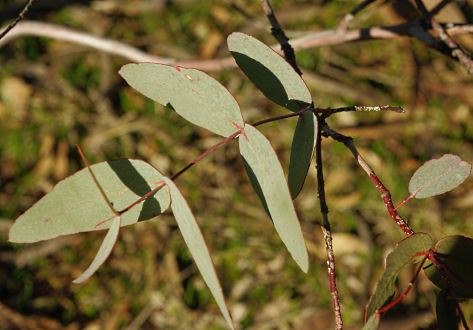
5: Yellow Gum at the old Gower school. 6: Juvenile leaves. Gowar, St Arnaud.
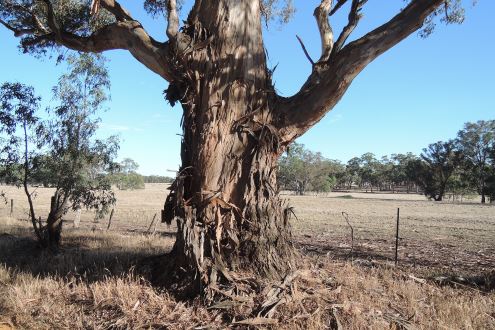
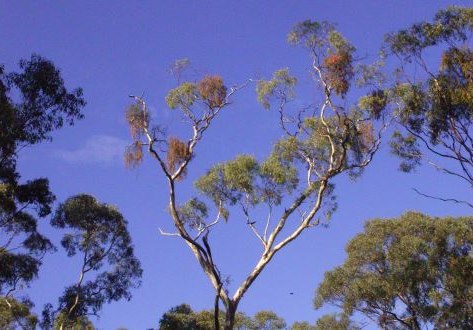
7: A mature tree. Lewis Road. 8: Yellow Gum with mistletoe. Fryerstown Cemetery. Many of the trees with mistletoe are able to shed mistletoe by killing off branches.
More Yellow Gum photos